Select a topic: [Nanowires] [Perovskite Photovoltaics] [Terahertz Technology] [Full publication list]
Key pubilcations on Terahertz Technology
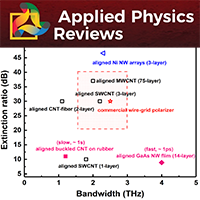
- The application of one-dimensional nanostructures in terahertz frequency devices
- Peng et al. Appl. Phys. Rev., 8:041314 (Dec 2021)
[
pdf ][ DOI:10.1063/5.0060797 ]
We review the exciting field of 1D terahertz devices, with emphasis on semiconductor nanowires and carbon nanotubes |

- Hot electron cooling in InSb probed by ultrafast time-resolved terahertz cyclotron resonance
- Xia et al. Phys. Rev. B, 103:245205 (Jun 2021)
[
pdf ][ DOI:10.1103/PhysRevB.103.245205 ]
We develop and apply the technique of time resolved cyclotron resonance to observe electron cooling in the narrow bandgap semiconductor indium antimonide and find excellent agreement with first principles GW calculations. |
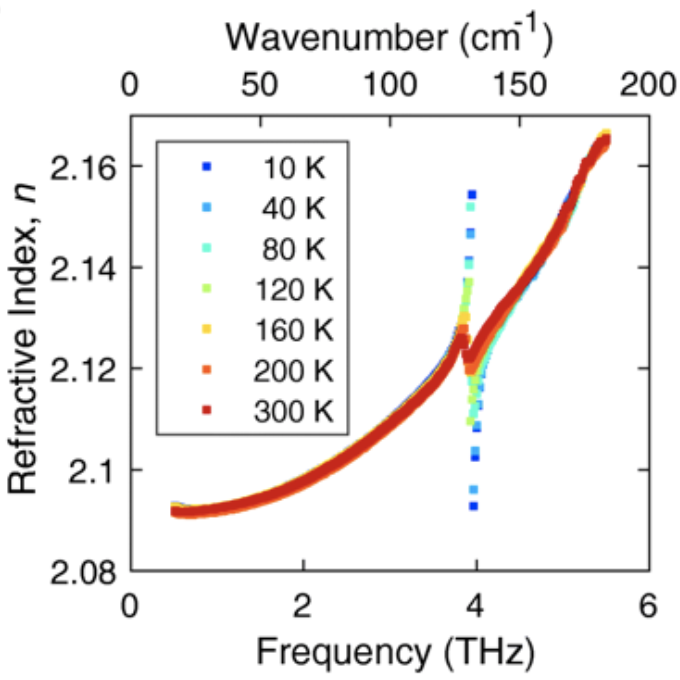
- Temperature-dependent refractive index of quartz at terahertz frequencies
- Davies et al. J. Infrared Millim. Terahertz Waves, 39:1236-1248 (Dec 2018)
[
pdf ][ DOI:10.1007/s10762-018-0538-7 ]
|
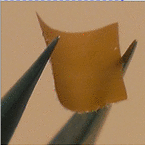
- An ultrafast switchable terahertz polarization modulator based on iii-v semiconductor nanowires
- Baig et al. Nano Lett., 17:2603-2610 (Apr 2017)
[
pdf ][ DOI:10.1021/acs.nanolett.7b00401 ]
Here, we present a novel ultrafast active THz polarization modulator based on GaAs semiconductor nanowires. The device has a picosecond switching time and broad bandwidth (0.1 and 4 THz). |
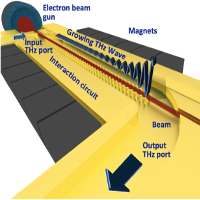
- The 2017 terahertz science and technology roadmap
- Dhillon et al. J. Phys. D-Appl. Phys., 50:043001 (Feb 2017)
[
pdf ][ DOI:10.1088/1361-6463/50/4/043001 ]
Comprehensive roadmap of terahertz science and technology in 2017. This 50 page article reviews that state-of-the-art and predicts future directions or research. |
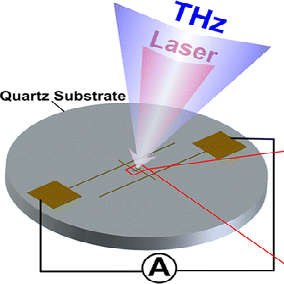
- Single Nanowire Photoconductive Terahertz Detectors
- Peng et al. Nano Lett., 15:206-210 (Jan 2015)
[
pdf ][ DOI:10.1021/nl5033843 ]
We have developed a phase sensitive detector of coherent THz radiation based on a single nanowire. The device uses one GaAs/AlGaAs core-shell nanowire as is active component. |

- An ultrafast carbon nanotube terahertz polarisation modulator
- Docherty et al. J. Appl. Phys., 115:203108 (May 2014)
[
pdf ][ DOI:10.1063/1.4879895 ]
We demonstrate the potential of unaligned carbon nanotubes as dynamically tunable THz polarisers |
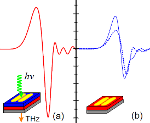
- Improved performance of {GaAs}-based terahertz emitters via surface passivation and silicon nitride encapsulation
- Headley et al. IEEE J. Sel. Top. Quantum Electron., 17:17-21 (Jan 2011)
[
pdf ][ DOI:10.1109/JSTQE.2010.2047006 ]
We have improved the stability and performance of terahertz photoconductive switches using a combination of chemical surface passivation and silicon nitride encapsulation. |
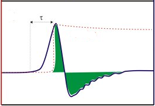
- Photoconductive response correction for detectors of terahertz radiation
- Castro-Camus et al. J. Appl. Phys., 104:053113 (Sep 2008)
[
pdf ][ DOI:10.1063/1.2969035 ]
We present a deconvolution method for correcting the spectral response of photoconductive THz detectors. We have also optimised ion-implanted materials for THz detector applications. |
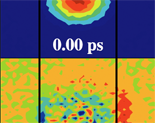
- Simulation and optimisation of terahertz emission from InGaAs and InP
photoconductive switches
- Lloyd-Hughes et al. Solid State Commun., 136:595-600 (Dec 2005)
[
pdf ][ DOI:10.1016/j.ssc.2005.09.037 ]
We simulate the terahertz emission from laterally biased InGaAs and InP using a three-dimensional carrier dynamics model in order to optimise the semiconductor material. |

- Generation of high-power terahertz pulses in a prism
- Johnston et al. Opt. Lett., 27:1935-1937 (Nov 2002)
[
pdf ][ DOI:10.1364/OL.27.001935 ]
A compact, high-power emitter of half-cycle terahertz (THz) radiation is demonstrated which produces pulses 20 times more powerful than conventional emitters. |
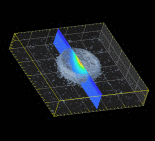
- Simulation of terahertz generation at semiconductor surfaces
- Johnston et al. Phys. Rev. B, 65:165301 (Apr 2002)
[
pdf ][ DOI:10.1103/PhysRevB.65.165301 ]
A semiclassical Monte Carlo model was developed which was used to distinguish between surface depletion field and photo-Dember mechanisms for generating THz radiation, and explain magnetic field enhanced THz generation.
|
|
|


